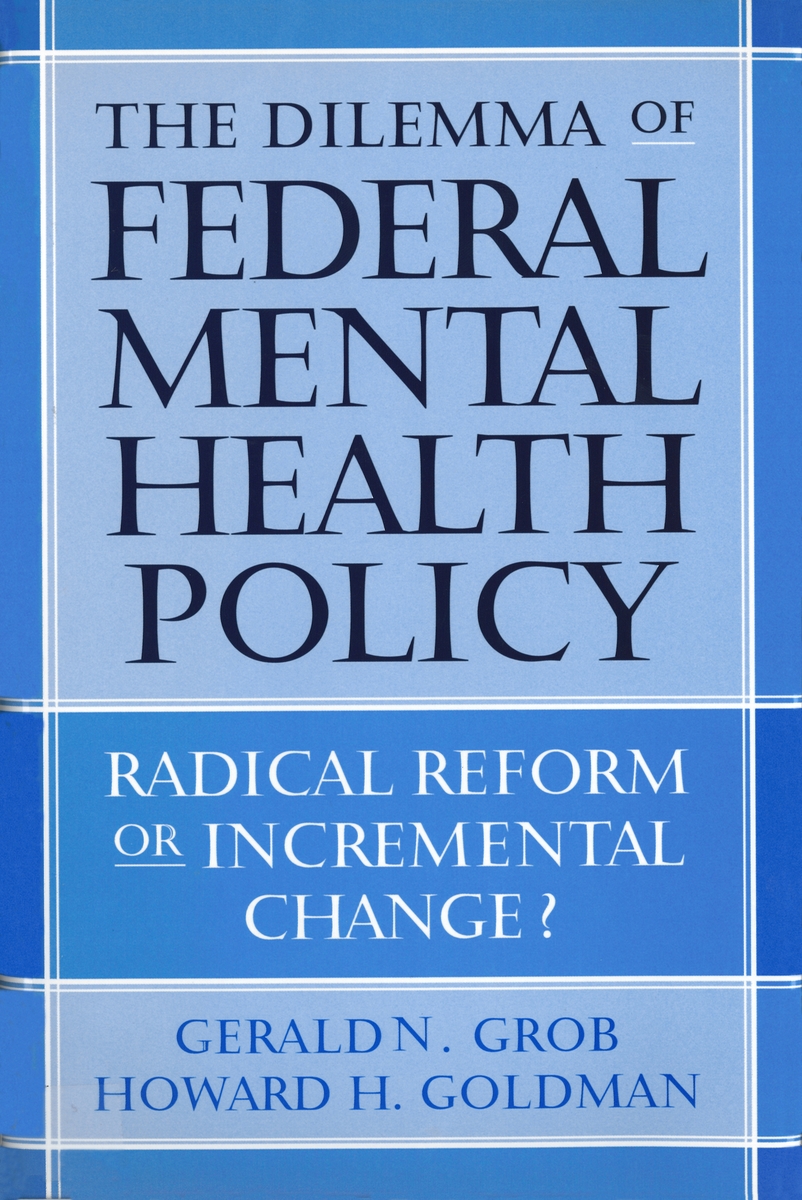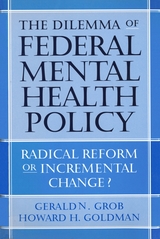The Dilemma of Federal Mental Health Policy: Radical Reform or Incremental Change?
Rutgers University Press, 2006
eISBN: 978-0-8135-7837-8 | Cloth: 978-0-8135-3958-4
Library of Congress Classification RA790.6.G76 2006
Dewey Decimal Classification 362.10425
eISBN: 978-0-8135-7837-8 | Cloth: 978-0-8135-3958-4
Library of Congress Classification RA790.6.G76 2006
Dewey Decimal Classification 362.10425
ABOUT THIS BOOK | AUTHOR BIOGRAPHY | REVIEWS | TOC
ABOUT THIS BOOK
Severe and persistent mental illnesses are among the most pressing health and social problems in contemporary America. Recent estimates suggest that more than three million people in the U.S. have disabling mental disorders. The direct and indirect costs of their care exceed 180 billion dollars nationwide each year. Effective treatments and services exist, but many such individuals do not have access to these services because of limitations in mental health and social policies.
For nearly two centuries Americans have grappled with the question of how to serve individuals with severe disorders. During the second half of the twentieth century, mental health policy advocates reacted against institutional care, claiming that community care and treatment would improve the lives of people with mental disorders. Once the exclusive province of state governments, the federal government moved into this policy arena after World War II. Policies ranged from those focused on mental disorders, to those that focused more broadly on health and social welfare.
In this book, Gerald N. Grob and Howard H. Goldman trace how an ever-changing coalition of mental health experts, patients' rights activists, and politicians envisioned this community-based system of psychiatric services. The authors show how policies shifted emphasis from radical reform to incremental change. Many have benefited from this shift, but many are left without the care they require.
For nearly two centuries Americans have grappled with the question of how to serve individuals with severe disorders. During the second half of the twentieth century, mental health policy advocates reacted against institutional care, claiming that community care and treatment would improve the lives of people with mental disorders. Once the exclusive province of state governments, the federal government moved into this policy arena after World War II. Policies ranged from those focused on mental disorders, to those that focused more broadly on health and social welfare.
In this book, Gerald N. Grob and Howard H. Goldman trace how an ever-changing coalition of mental health experts, patients' rights activists, and politicians envisioned this community-based system of psychiatric services. The authors show how policies shifted emphasis from radical reform to incremental change. Many have benefited from this shift, but many are left without the care they require.
See other books on: Dilemma | Grob, Gerald N. | Health care reform | Medical policy | Mental health services
See other titles from Rutgers University Press



























